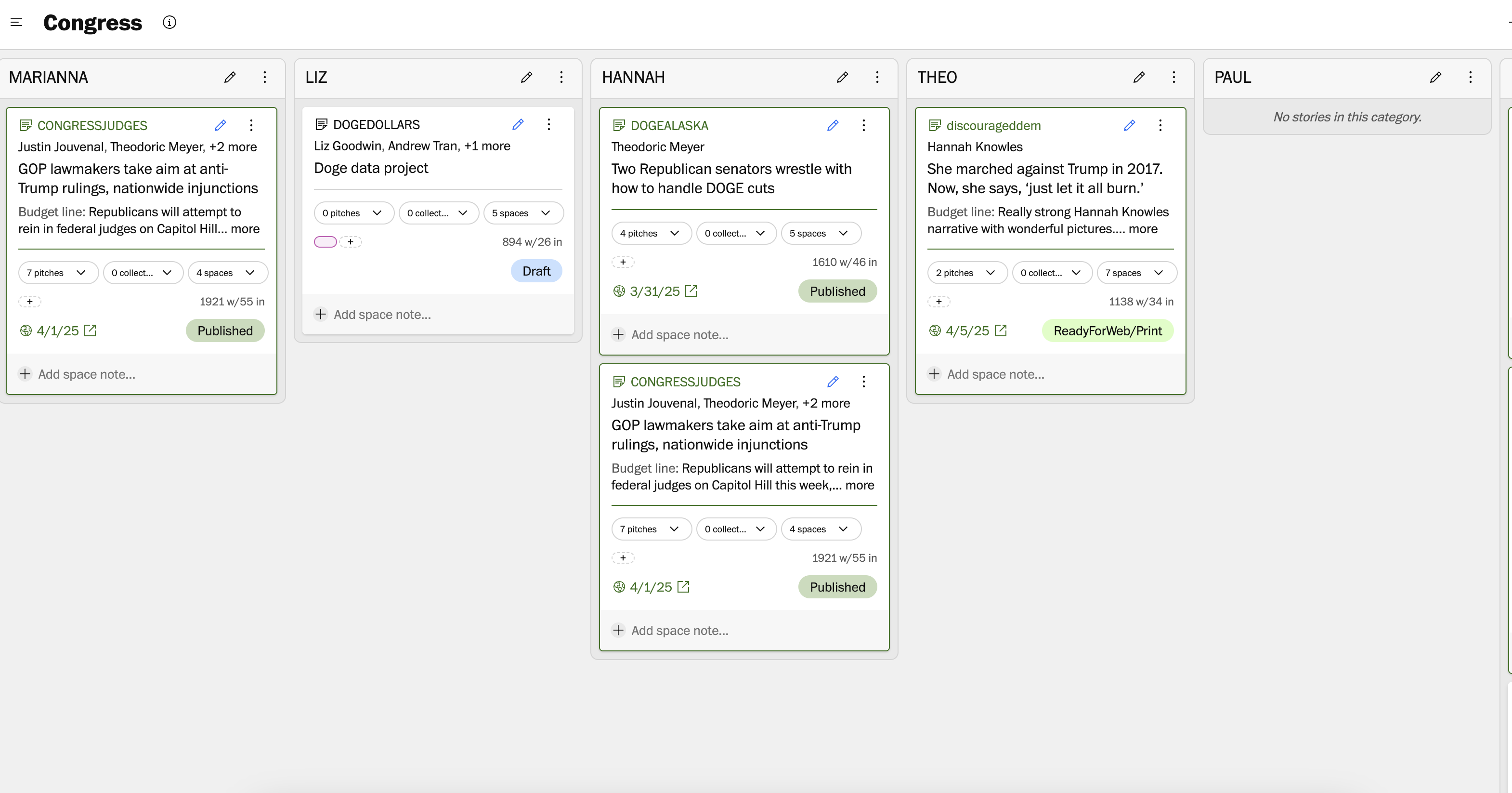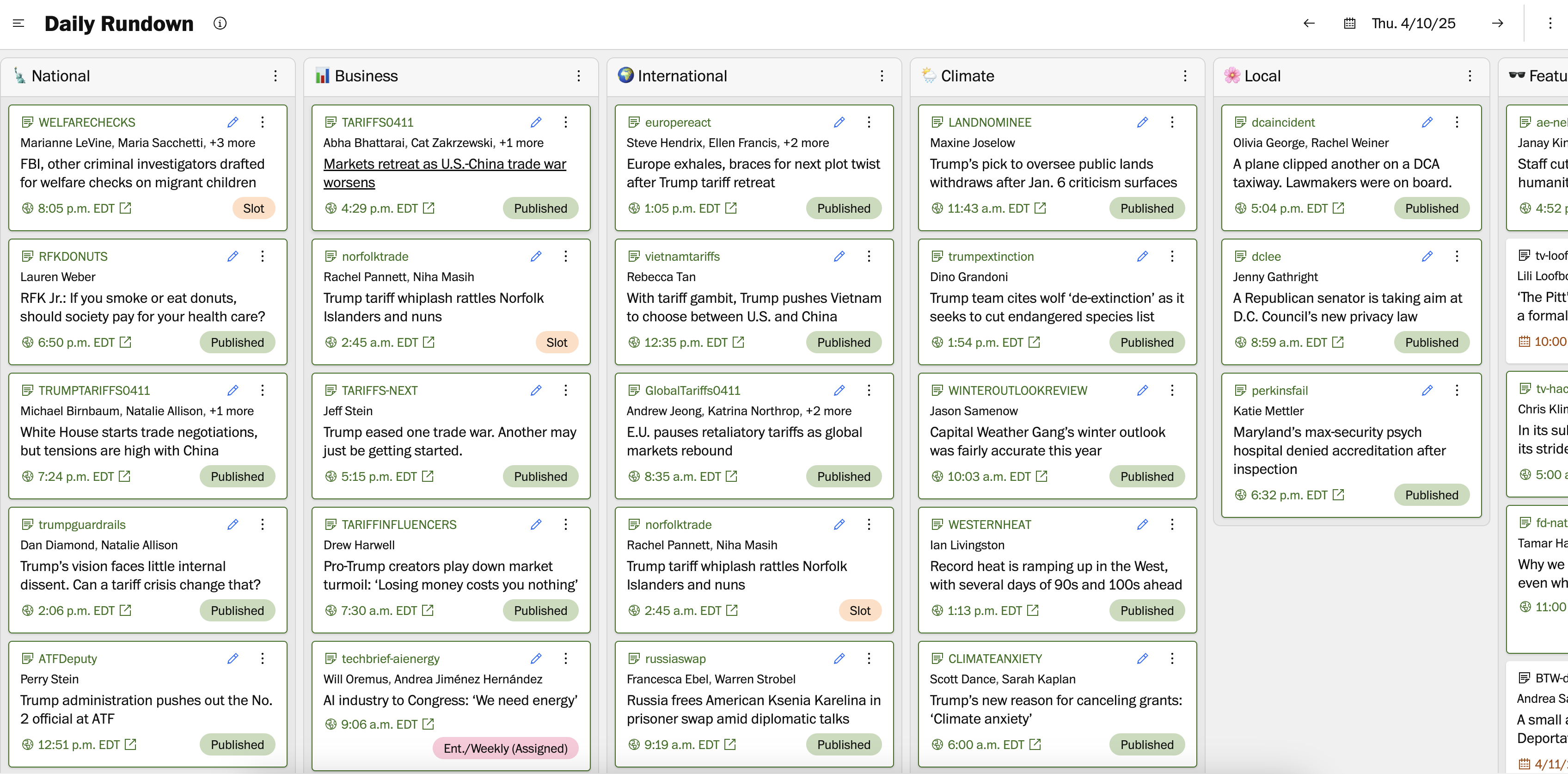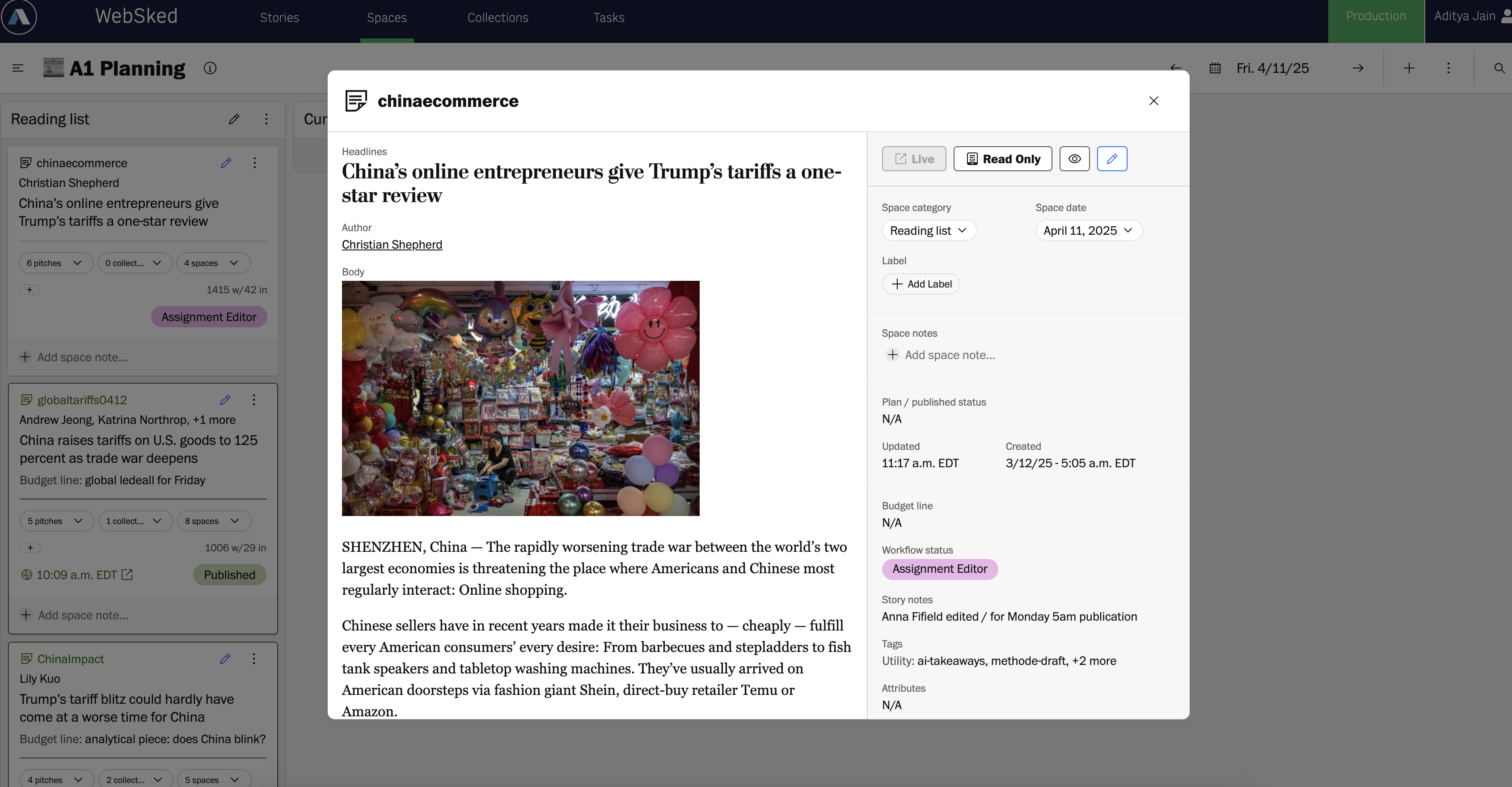My Role
I worked as a full stack developer on this project, leaning on my frontend experience to build the UI components in React, suggesting changes to the specs after testing prototypes, and contributing towards the creation of a shared Design System for this project and its sister products. I also made contributions to the backend implementation of the project, such as the updates to the backend handling of daily rundown updates that enabled the product to be used collaboratively in a live environment. In addition, I made several key contributions to the Developer Experience of the project, introducing the team to Vercel feature deployments, automated git workflows to test and deploy feature branches, and to cut new releases. I advocated for the use of small development iterations to ensure that the product was always in a working state, and to allow for feedback from the newsroom stakeholders to be incorporated quickly.
The Problem
The Washington Post is a major American newspaper that has been in operation since 1877. It is one of the most widely read newspapers in the United States and is known for its investigative journalism and coverage of national and international news.
The Post’s editors and journalists meet twice every day to plan upcoming news coverage. The managing editor acts as a facilitator for this meeting in which each news desk discusses their upcoming coverage and any potential conflicts. This is a critical part of the newsroom’s workflow, and it had remained largely unchanged for decades. Journalists would use a variety of tools to show their upcoming work, including paper notes, excel spreadsheets, and relying on memory. This often led to confusion and a lack of record keeping about the coverage that was planned for the day.
The Solution
To address these issues, my team and I built Spaces, a tool that helps the Washington Post's journalists and editors plan their coverage in a collaborative environment that is tightly integrated with the Washington Post's content management system for a seamless workflow.
A Centralized Workspace

The most basic feature of Spaces is a centralized workspace for each news desk to plan their coverage. This space can be managed by the editor for the respective news desk, and is visible to all the people in the organization regardless of their role. Thus, everyone in the organization has a picture of the coverage that is planned for the day by that particular news desk, reducing the potential of conflicts in coverage, as well as aiding adjacent teams such as Social to plan their work.
The Daily Rundown
 The daily rundown is a special space that aggregates work from the local spaces of each news desk. This allows the managing editor and the editor-in-chief to see the entire day's coverage at once, and to identify any potential conflicts or gaps in coverage.
The daily rundown is a special space that aggregates work from the local spaces of each news desk. This allows the managing editor and the editor-in-chief to see the entire day's coverage at once, and to identify any potential conflicts or gaps in coverage.
Tight Integration with the Content Management System

The most important part of Spaces is that it is tightly integrated with the Washington Post's content management system. This allows journalists to bring into Spaces the stories that they have already created within the CMS. Furthermore, all metadata for the story is also bought into Spaces, such as the story's publication date, authors, publish status, and more.
Collaborative Planning
We envisioned Spaces as a collaborative environment where journalists and editors could leave comments on each other's stories, and edit the Spaces themselves in real-time. My team and I designed both the backend implemenation to enable this feature, as well as the UI and UX around locking stories while they were being edited by another user.